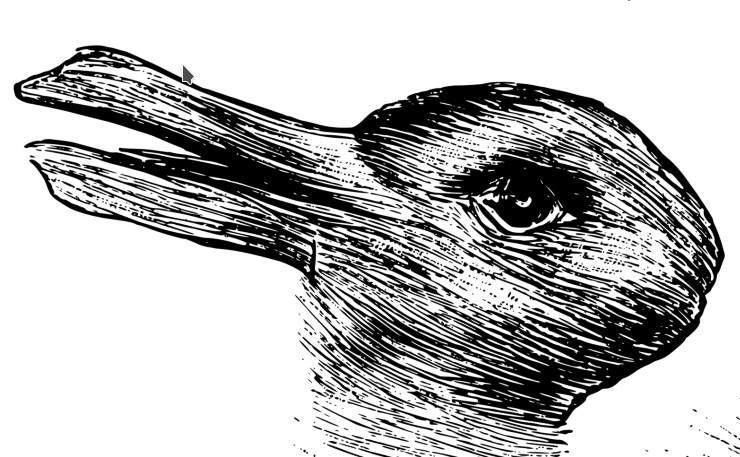The blur is different from having no boundaries

This post discusses the idea or mental stance, not a “belief state”, of the blur. It is a key aspect of my thinking, or at least, a key meditation or practice. I came to it in parallel to my related work on the… —gap, with which the blur is part of that Janus Dance. As such it is a conscious or intentional or mindful activity, and is related to other practices, both venerable, ancient, and even perhaps occultish, but without any claims to magic or truth.
I keep track of my writing about the blur at this linkpost page: Posts on the blur.
But I use it everywhere.
The prior art for this is found in various Buddhisms, and more recently I have found it (in the early days of blogging why we should) in neo-Pyrrhonist practices of a ‘suspension of judgement’. The soteriological aspect (personal salvation or mere growth) is not a prime motivator for me. I acknowledge that this option has maintained it through history.
The blur is potentially related to the bracketing of Husserl but I have not read any work by that philosopher (also aware of Buddhism practices). Not yet.
It is in part of this activity of the blur, that I recognized the worldling we do, that within the conscious, and sometimes imperial, world-building, and homemaking, there was a common core of our behaviour together, which various worldbuilding outcomes exploited, or dogmatised. And discovered in this new world of insight, that it is very hard to describe to people worlding, that they are worlding when they are selfing and vice-versa. One could describe it as a continuum of activities or doings, or rites and rituals, but I suspect that is too simple a description. How wound-up is a piece of string that ropes us together? How loose is the twine of our attentions?
In order to explain the blur a little more I would like to give a negative comparison, that the blur is not a lack of boundaries.
The blur is different from having no boundaries. It is a creative act that (seeks to) override the categories of habit.
As an active moment of mind the intention of the blur seeks to reframe its frames, at least of language if not of perception. As such it is a derivative intention, a response to the boundaries we live by, that we inherited, that we grew into, and which arise in the routines of of the day, practical and minding, selfing and worlding.
If one has no boundaries then this blur may be of no use at all.
Some people I have met along the way, who are high in empathy, or at least mirror neurons complexes of care and consideration, who world the self more than they self the world, seem to have no boundaries. At least by comparison with others around them. Can we use the word spectrum here? Should we?
They do not lack intelligence, indeed they have to problem solve more and more quickly than someone with more ready short-cuts of habituated categories, or overlays on the world they live in.
For the boundary-less solutions become an itinerary, not a map or model. Itineraries are maintained in a warehouse of experience. Each is separate and singular, they do not fork, they do not form a network. And they close at the end of the day. Or righ tnow.
Itineraries are like lists temporal, items on the list maybe skipped, but they do not cross over to another itinerary. They end, and can be cut short by the sharp lessons of life in the world, through which they empath along with you, accomodate you. (Please notice and value this, you SOBs.)
Despite the lack of linkage, or perhaps even analogy making, there are no boundaries between itineraries, curiously all co-exists in mind. Available. Distinct. Un-deranged.
Because there are no boundaries there is little to no comparison between them once one motivates moves along an itinerary. The itineraries never cross once underway. In dreams they will likely waver.
The worlds of others will interfere, perhaps as frustrating deflection but empathy will always accommodate the stark annoyances commonly called choices and distractions. The whole point is to met with our others. There is nothing schizoid in a lack of boundaries.
By comparison, the blur does not lose sight of the boundaries, the edges, the definition, the categorically set. The blur downgrades their acuity, and thus their power to delude. But the blur comes after innocence is lost, not before.
In a lack of boundaries there is no change of scale, in lacking comparison there is no way to re-frame, or phase change (all the way down). It is just one surprising thing after another. Empathy is high, the world is sweet and the self joyous, and what to you or me are frustrating agendas with thir own itineraries of bias/inclination/point-of-view — their own lines of momentum — to the boundary-less can be another helper on the way.
The blur lacks this world nurturing creativity, being born too late.

PS. Just remember good fences make good neighbours, not because of the quality of the construction, but because of the quality of the agreement. The blur maintains the agreement and looks (at the very least) at the wider resolutions (yes that is a pun on agreement and visual acuity) (The pun always blurs).
Crossposted at substack.com,
